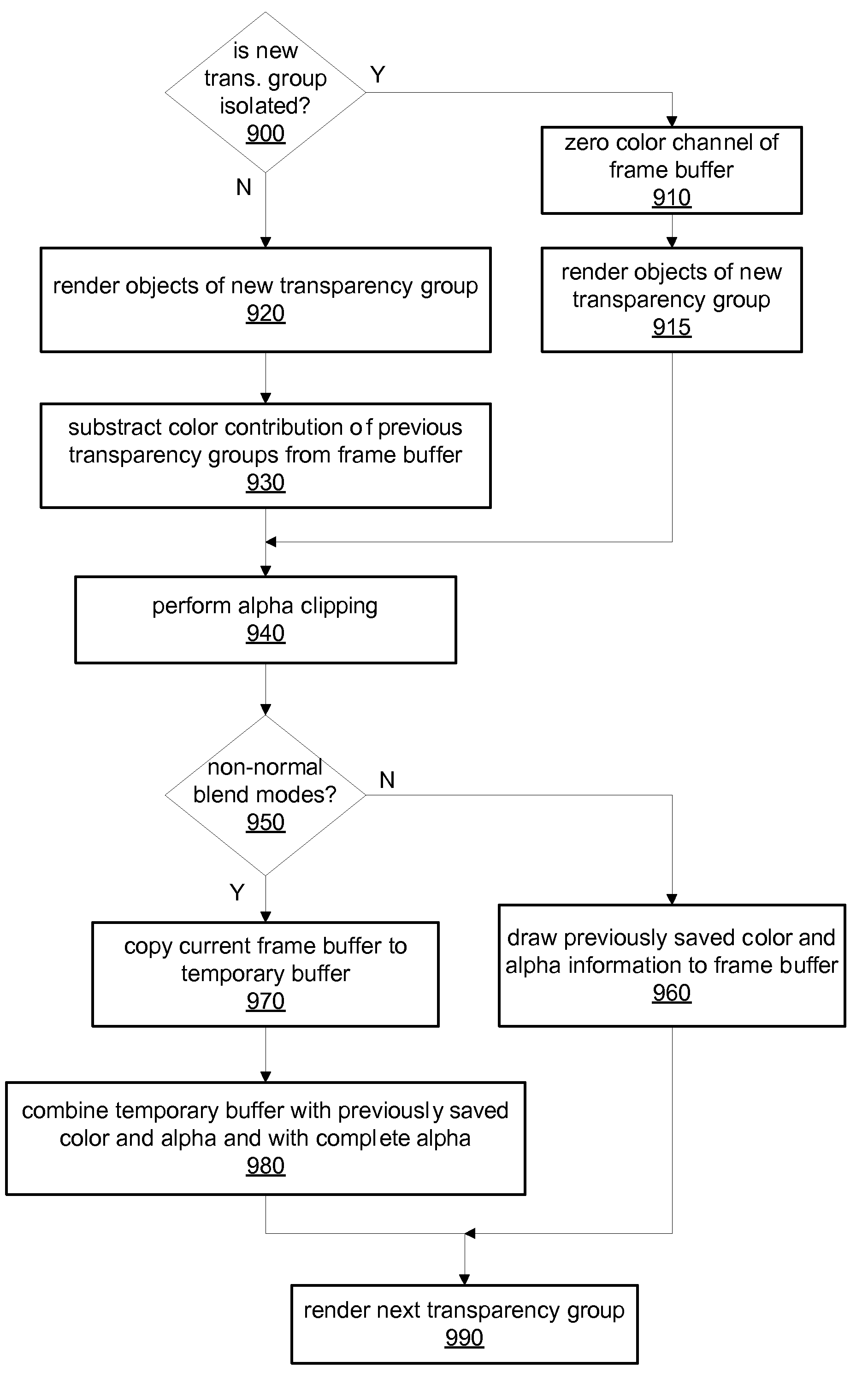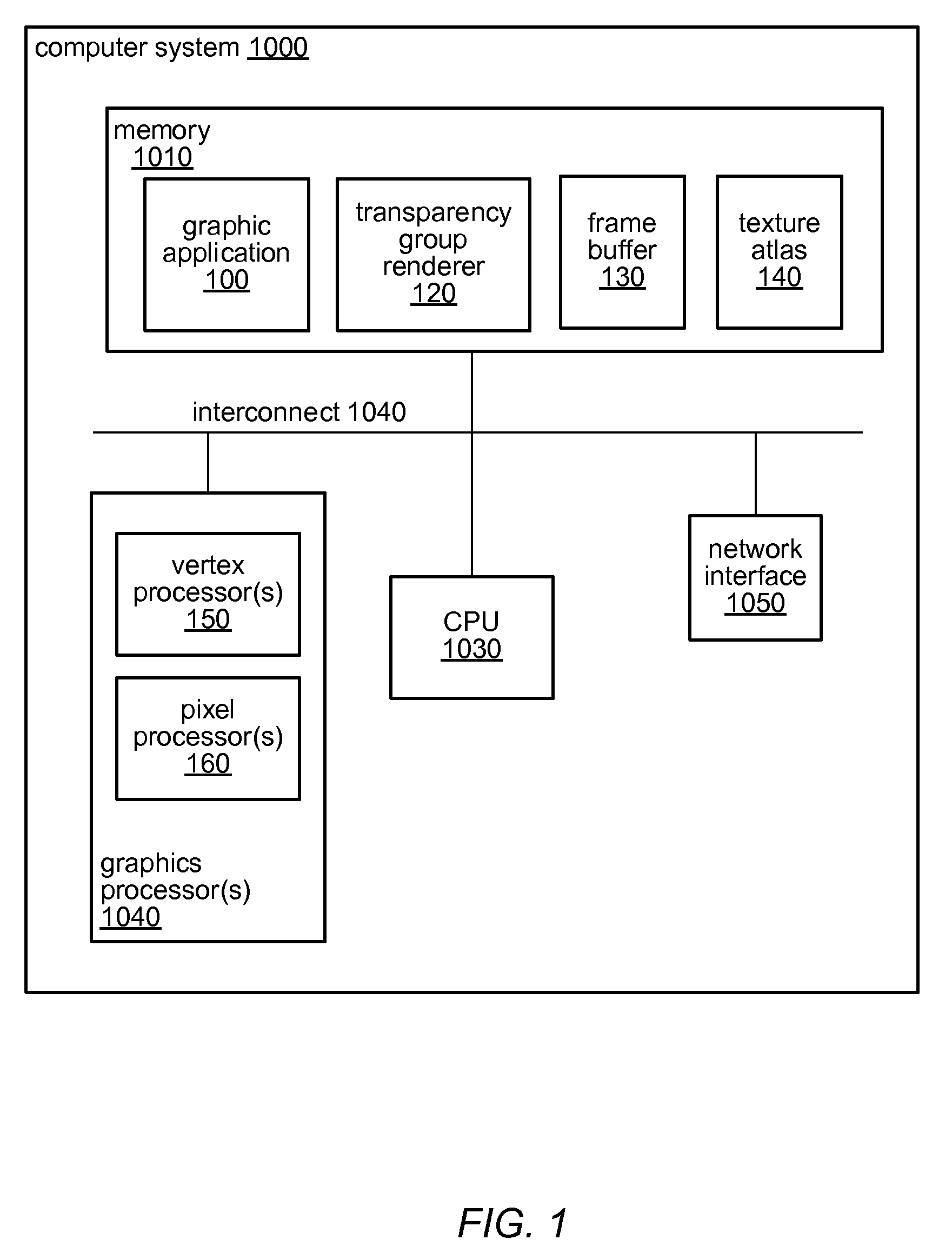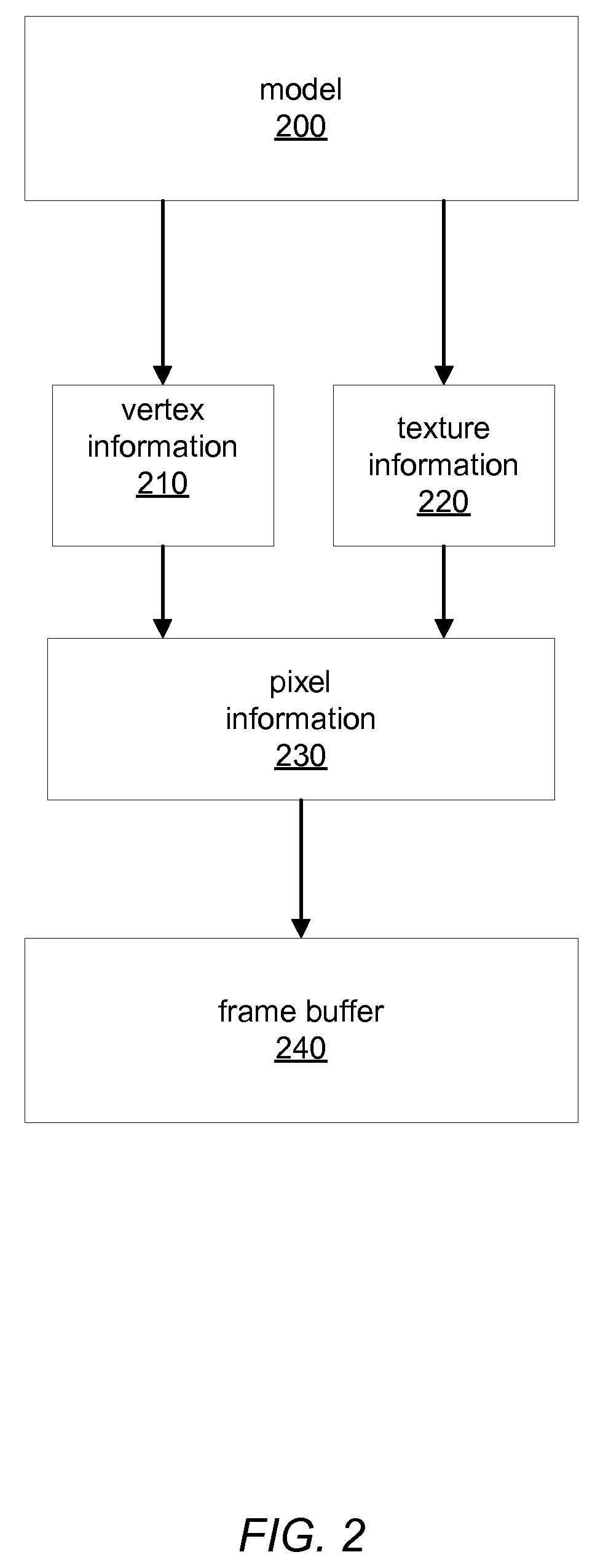Transparency Group Computation on a Graphics Processing Unit
a graphics processing unit and transparency group technology, applied in the field of computer systems, can solve the problems of increasing the overall execution time, execution time, and high cost of performing a context switch on a gpu, and achieve the effect of slow and expensiv
- Summary
- Abstract
- Description
- Claims
- Application Information
AI Technical Summary
Benefits of technology
Problems solved by technology
Method used
Image
Examples
Embodiment Construction
[0020]Groups of graphic objects, such as transparency groups, or other images may be generated or rendered on graphics hardware, such as on a GPU, using only a single frame buffer and without the need to switch contexts to another frame buffer, which can be extremely slow and expensive (in terms of execution time). As will be described herein, special use of a texture atlas may allow complex image rendering, including the transparency-based blending of multiple smaller images, using a single frame buffer and without performing a context switch. FIG. 1 is a block diagram illustrating one embodiments of a computer system 1000 suitable for implementing the rendering of transparency groups on a GPU 1040 using a single frame buffer 130.
[0021]A graphics processing unit or GPU is a dedicated graphics rendering device for a personal computer, workstation or game console. Modern GPUs may be very efficient at manipulating and displaying computer graphics and their highly parallel structure ma...
PUM
 Login to View More
Login to View More Abstract
Description
Claims
Application Information
 Login to View More
Login to View More - R&D
- Intellectual Property
- Life Sciences
- Materials
- Tech Scout
- Unparalleled Data Quality
- Higher Quality Content
- 60% Fewer Hallucinations
Browse by: Latest US Patents, China's latest patents, Technical Efficacy Thesaurus, Application Domain, Technology Topic, Popular Technical Reports.
© 2025 PatSnap. All rights reserved.Legal|Privacy policy|Modern Slavery Act Transparency Statement|Sitemap|About US| Contact US: help@patsnap.com



